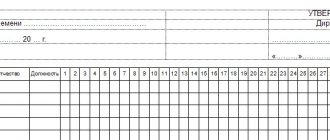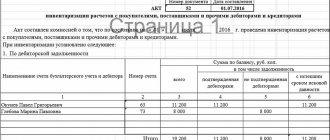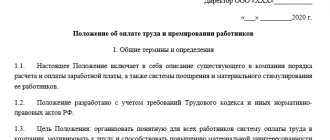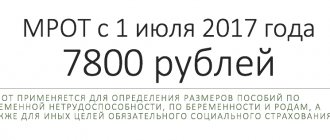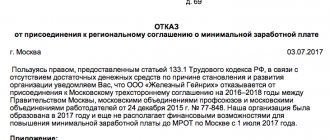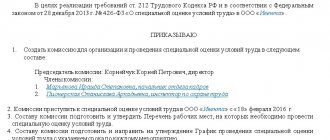State Duma deputies introduced a bill introducing a minimum hourly wage of at least 150 rubles per hour for those who work under fixed-term contracts and part-time. The bill has been discussed in the State Duma since June 2021, and at first this initiative met with bewilderment among other deputies: won’t employers use this tool to pay people less?
Economists say that the new law will “shake up” ossified Russian labor legislation and, on the contrary, will create more jobs. True, the timing for such a reform is poorly chosen: due to the crisis, company management will use this tool to optimize budgets, and people’s incomes will likely fall even further.
New changes to the minimum wage: prerequisites
The minimum wage is set annually and is equal to the subsistence level of the working-age population for the 2nd quarter of last year. In 2020, this figure is 12,130 rubles. (Federal Law dated December 27, 2019 No. 463-FZ). Regions can set their own minimum wage, which cannot be lower than the federal one, i.e. 12,130 rubles.
The minimum wage arose in connection with the need to evaluate the work of the lowest paid workers. Thus, the state is trying to ensure a minimum threshold of fair wages and control employers.
Control is carried out as follows:
- The Federal Tax Service pays attention to understated incomes in forms 6-NDFL, “Calculation of insurance premiums” (special control ratios have been developed for this purpose, comparing indicators with the minimum wage and industry average wages in the region);
- inspectors will send a demand to the employer to explain the low salary figures;
- tax officials send information about violations to the labor inspectorate, so employers who underestimate wages may be called to the labor commission;
- the payer also risks being included in the plan of on-site tax audits (clause 5 of Appendix 2 to the Federal Tax Service order No. MM-3-06/333 dated May 30, 2007).
Unscrupulous employers often pay workers below the minimum wage, arguing their position with part-time work. It is for such a case that the Government will establish a new minimum wage - hourly.
Financial unit
According to him, a fundamental decision to correct this situation has already been made. The deputy believes that as a replacement for the minimum wage, a new definition should appear in the legislation - for example, a financial unit.
“It’s absolutely right that they decided to get rid of ambiguity.” After all, we are not talking about the minimum wage ceasing to exist altogether. “He remains in labor law,” said Mikhail Emelyanov, deputy chairman of the Socialist Revolutionary faction.
However, the parliamentarian emphasized that in his message to the Federal Assembly on January 15, it was no coincidence that Vladimir Putin proposed enshrining the concept of minimum wage in the Constitution. According to the president, the minimum wage should not be less than the subsistence level of the working population in the country as a whole. Therefore, the minimum wage will not only not disappear, but will also increase its importance, noted Mikhail Emelyanov.
Deputy Chairman of the LDPR faction Yaroslav Nilov also considers it possible to vote for the Cabinet’s initiative. According to him, to regulate wage payments, the federal law “On the Minimum Wage” and the Labor Code, which enshrine the concept of minimum wage, are sufficient.
“An exception to the Civil Code does not remove this wording from the legal field of Russia,” the deputy emphasized. He also said that the amendment on the payment of the minimum wage in the Constitution could be clarified. According to him, the main law of the country needs to specify what time frames for the increase are being discussed. “We propose adding the words “at least once a year,” because an increase every five years can also be interpreted as regular,” explained Yaroslav Nilov.
But the head of the committee on regional policy, problems of the North and the Far East, communist Nikolai Kharitonov, on the contrary, is skeptical about the initiative of the Cabinet of Ministers and believes that the Communist Party of the Russian Federation will not support it. According to him, the minimum wage today leaves much to be desired. “For Russia, this figure of 12 thousand rubles is very small; who can live on it today,” said the deputy.
The head of the political expert group, Konstantin Kalachev, also believes that the status of the minimum wage in Russia needs to be increased. According to the expert, the minimum wage should reflect the real cost of living in the country.
Introduction of a new hourly minimum wage
Legislators are concerned that understatement of wages allows entities to receive unreasonably inflated profits and illegally reduce payments on taxes and contributions. At the same time, subordinates are forced to agree to payments “in envelopes”, for fear of being left without work, especially during the COVID-19 pandemic.
Therefore, LDPR deputies developed a bill providing for a minimum hourly wage in Russia from January 1, 2021. The measure will contribute to the growth of household incomes and bring wages to the level of industrialized countries.
Numbers instead of letters
The bill being prepared by the Ministry of Justice is called “On Amendments to the Civil Code of the Russian Federation regarding the exclusion of instructions on the minimum wage.” The document proposes to remove the reference to the minimum wage, replacing the words with specific amounts of cash payments. Similar amendments are planned to be made to the Air Code of the Russian Federation, the Railway Transport Charter and a number of federal laws. As the press service of the ministry explains, the changes are being prepared due to the fact that the concept of minimum wage has recently been given a broader meaning and this situation needs to be corrected by eliminating double interpretation.
“The minimum wage was used in various branches of legislation, including to determine the amount of amounts for civil obligations,” the ministry clarified.
According to the order of Deputy Prime Minister Tatyana Golikova, given back in May last year, the minimum wage should be interpreted only in accordance with the provisions of the law “On the Minimum Wage.” Or rather, exclusively at least the minimum amount of money that is guaranteed to the employee as remuneration for performing his job duties. In particular, fees and fines based on the minimum wage in the Railway Transport Charter are now proposed to be calculated based on their base amount of 100 rubles.
“The adoption of bills will make it possible to establish in these acts the amounts of amounts associated with civil obligations, without reference to the minimum wage (for example, in absolute figures by indicating the amount in rubles or using another criterion not related to the minimum wage), - the press explains. government service.
In addition to the document being prepared by the Ministry of Justice, the Cabinet Office is already working on a bill “On amendments to certain legislative acts of the Russian Federation regarding the exclusion of instructions on the minimum wage.” According to the legislative activity plan, they should be submitted to the State Duma in March 2021.
“This bill is definitely needed. In the 1990s in Russia, everything was measured in minimum wages, even criminal and administrative liability. Stole so many minimum wages - such and such an article. This prevented an increase in the minimum wage, so they decided to remove it from other laws that allow for double interpretation,” Andrei Isaev, first deputy chairman of the United Russia faction, explained to Izvestia.
Minimum hourly rate (MRHS) from 01/01/2021
The bill provides for the initial value of the hourly rate - 150 rubles. Further, annually the amount will be indexed by the percentage of inflation based on the results of the past year.
The option to establish the MRES based on the current minimum wage was not approved because:
- the number of working hours in each month is different, monthly changes in the hourly rate are impractical;
- the rate determined by the minimum wage was found to be too low. For example, with a minimum wage of 12,130 rubles and a 40-hour work week in May, 135 working hours cost 89.85 rubles. (12,130 / 135), and in July 176 working hours costing 68.92 rubles. (12,130 / 176).
At the same time, the MRChS is 150 rubles. guarantees a higher salary. If an employee works for a whole month at this rate:
- for May he will receive: 135 hours x 150 = 20,250 rubles;
- for July: 176 hours x 150 = 26,400 rubles.
Indexation of wages for public sector employees from October 2020
According to the Minister of Labor and Social Protection Maxim Topilin, from October 1 of this year, wages in the public sector are expected to increase by 3%. We are talking about the following categories of citizens:
- Doctors, teachers, cultural workers, nursing staff and others, who are discussed in the decrees of the President of the Russian Federation, issued in May.
- Lawyers, accountants, personnel officers and others.
In the coming years, it is planned to increase the share of payments of official salaries; the recommended share of salary in the salary should be no less than:
- 55% for healthcare workers.
- 50% for cultural workers.
- 70% for institutions that carry out their work in the field of sports.
For whom will the new minimum wage be established (hourly)
Employee salaries must correspond to the minimum hourly rate if two conditions are met simultaneously:
- working part-time;
- the employment contract is fixed-term and concluded for a period of up to 3 months.
The use of the indicator in other situations is unacceptable.
It turns out that the accountant will now monitor the compliance of salaries not only with the monthly minimum wage, but also with the minimum wage for individual employees.
When is it used?
The system of monetary incentives for hours worked is mainly used when it is quite difficult to standardize the work of employees or an employee. Therefore, a fixed cost per hour and the amount of time actually spent makes it possible to calculate the salary most accurately. This allows the employer to avoid overpayments for the absence of an employee on site for various reasons.
At the same time, such a system is beneficial for those who are employed part-time or part-time.
An example of the application of the minimum hourly wage
The company hires an employee for temporary work under an employment contract for 3 months. The following working regime is established:
- 6 hours a day;
- working days are Monday, Wednesday and Friday.
We will calculate the employee’s salary if his first working day is July 6, 2021. Let us assume that an employment contract with a period of 3 months establishes an hourly wage at the rate of 150 rubles. per hour, and in the region there is a minimum wage equal to the federal one (RUB 12,130):
Billing month Number of working days Number of working hours Salary at rate, rub. What could the salary be based on the minimum wage, rub. Benefit compared to minimum wage, rub. July (from 07/06/2020)
12 12 x 6 = 72 72 x 150 = 10,800 12,130 / 22 (working days) x 12 = 6,616.36 4 183,64 August 13 13 x 6 = 78 78 x 150 = 11,700 12,130 / 21 x 13 = 7,509.05 4 190,95 September 13 13 x 6 = 78 78 x 150 = 11,700 12,130 / 22 x 13 = 7,167.73 4 532,27 October (until 05.10.2020)
2 2 x 6 = 12 12 x 150 = 1,800 12,130 / 22 x 2 = 1,102.73 697,27
Based on what documents is it calculated?
The main document for calculating wages for hourly wages is a time sheet. It is in it that the responsible employee appointed by the employer enters the number of hours that were actually worked by the employee or employees who were hired at work on the condition of such time-based payment.
The time sheets are transferred to the accounting department of the organization, which has information about the cost of one hour of labor time. This data is the basis for calculating salaries.
The formula here is simple: the monthly salary will be the product of the hourly tariff rate and the number of hours worked in the month.
Possible risks
At one time, former Minister of the Ministry of Labor of the Russian Federation Maxim Topilin called the idea of introducing hourly wages for Russians as a “dangerous idea,” according to him, this could lead to disruptions in the relationship between employee and employer.
Topilin recalled that the government is also discussing various options for bringing the minimum wage to the level of the subsistence level, including setting the minimum wage at the level of the national subsistence minimum, at the level of the regional subsistence minimum in each subject.
“There is also an option, the issue of hourly wages is being discussed and proposals were made by State Duma deputies... it seems to us that this is a dangerous idea, taking into account such a relationship between employee and employer, very serious disturbances (there may be) and incomprehensible actions during a short working week. We don’t quite, I’ll be honest here, understand how the relationship between an employee and an employer can behave, it seems to us that we can lose more here than gain,” Topilin said.
He also recalled the position of the Ministry of Labor on the need to take into account regional indicators when increasing the minimum wage, since the level of the subsistence level varies greatly in different regions - from 8 to 20 thousand rubles. Therefore, a sharp increase in the minimum wage could negatively affect 53 regions of the country, especially the south of Russia and the middle zone.
According to Topilin, it is necessary to determine an action plan in order to understand in advance when and by how much to increase the minimum wage so as to avoid negative consequences.
In the hasty desire to fulfill the president’s instructions and get ahead of everyone else with a successful initiative, there may also be a missed defect, for example, inconsistency of concepts, because in the legal field a lot is tied to the minimum wage and its size today fluctuates within the wide amplitude of regional opportunities. Therefore, the adoption of such serious changes must be accompanied by in-depth study, coordination of all interested parties and, of course, taking into account the opinions of public discussion.
Who benefits?
The minimum hourly rate has been used for a long time in many developed countries:
- in Hungary and Latvia – €10,
- in Germany it is €8.5 (about 755 rubles),
- in the USA the federal rate is $7.3 (about 545 rubles),
The maximum payment in Denmark is €45 per hour. LDPR deputies have already proposed hourly wages:
- In 2021. The bill on a minimum wage of 100 rubles per hour was rejected.
- In June of this year. The rate is 150 rubles and is indexed once a year, taking into account inflation. The document is for consideration and is located in the State Duma’s electronic database.
Vice-Rector of the Financial University Alexander Safonov argues that hourly labor rates are needed for citizens who earn no more than 80 rubles per hour. The number of such people is small. The law also leaves loopholes for unscrupulous employers. They may evade paying the minimum rate when concluding a civil contract. The second option is to register employees as self-employed.
